What is the Recyclable Symbol on the Packaging?
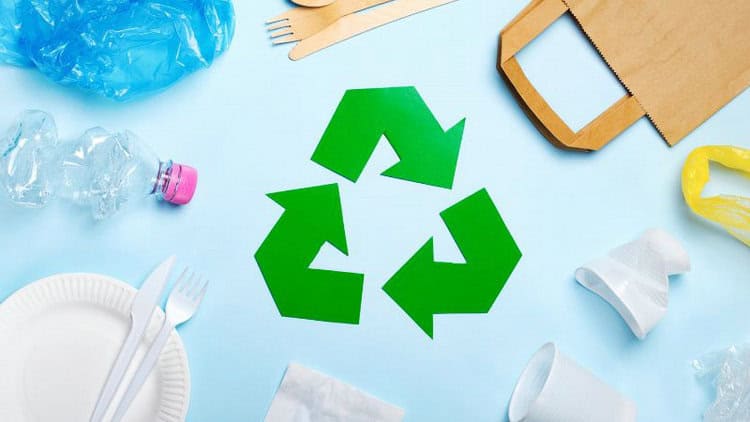
Packaging can be recycled. When you encounter symbols on packaging, they’re not just for show. They inform you about the recyclability of the item and the type of material it’s made from, guiding your disposal choices.
What Does the Different Symbols Mean
Mobius Loop
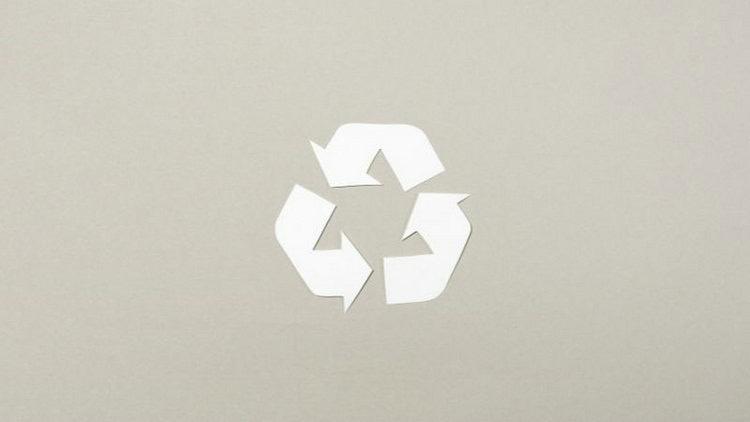
The Mobius loop, also known as the universal recycling symbol, is one of the most widely recognized icons related to recycling.
It consists of three twisted arrows that chase each other in a triangular loop. Each arrow represents one step in the recycling process: collection of recyclable materials, processing those materials into new products, and purchasing products made from recycled materials.
- By itself, the symbol likely conveys that the packaging is both recyclable and made entirely from recycled material
- When accompanied by a percentage, it indicates the packaging’s recycled content
- The symbol with no text or numbers usually means the packaging can be recycled, but not necessarily that it has been made from recycled materials
Green Dot
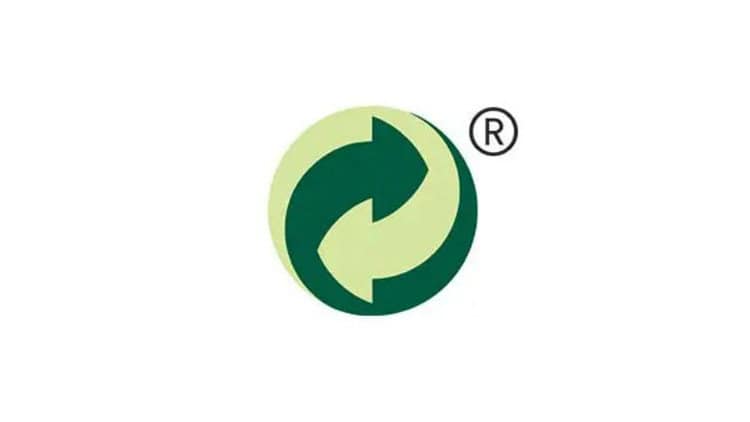
The Green Dot is a widely recognized symbol on product packaging in many European countries. It is a financing symbol for extended producer responsibility (EPR) systems, which means that the actual recycling capabilities still vary by location and material, the Green Dot mainly proves a company’s financial contribution to the recycling system in the countries where they distribute their products.
Home Composting
A simple icon that means you can compost that item at home. In Austria, items with this label can be disposed of in a home compost bin or with organic/food waste collections.
What is the Recycling Codes
Recycling codes, primarily seen as numbers within the universal recycling symbol of three chasing arrows, serve a crucial role. They classify materials to streamline the recycling process.
Symbols for Different Recycled Mertails
Plastic Recycling Symbols
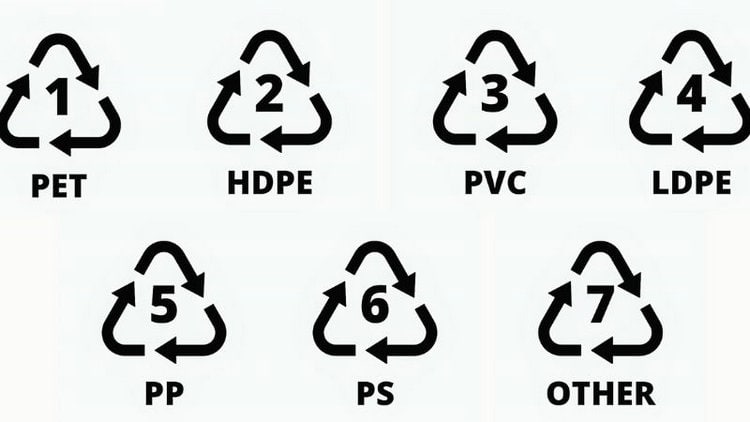
The Mobius loop symbol with a number (1-7) inside is called a resin identification code. It indicates the type of plastic resin used to make the item but does not necessarily mean it is recyclable.
The numbers correspond to different types of plastic:
- 1-(PET or PETE): Polyethylene terephthalate, used for soft drink bottles and food packaging. Widely recycled.
- 2 -(HDPE): High-density polyethylene, used for milk jugs, shampoo bottles, etc. Widely recycled.
- 3 -(PVC or V): Polyvinyl chloride, used for pipes, window frames, flooring. Rarely recycled.
- 4 -(LDPE): Low-density polyethylene, used for squeezable bottles, plastic bags. Not usually recycled.
- 5 -(PP): Polypropylene, used for bottle caps, food containers. Sometimes recycled.
- 6 -(PS): Polystyrene, used for disposable plates, cups, food packaging. Difficult to recycle.
- 7 -(Other): Other plastics like acrylic, nylon, polycarbonate. Generally not recyclable.
Plastic recycling codes encompass a wide variety of common household items, from food and beverage containers to personal care products, toys, electronics and more. Knowing what products fall under each code can help consumers properly sort and recycle plastics.
Here are some common examples of products for each plastic recycling code:
| Recycling Code | Abbreviation | Plastic Type | Common Products | Recyclability |
|---|---|---|---|---|
| 1 | PET or PETE | Polyethylene Terephthalate | Soft drink bottles, cooking oil containers, peanut butter jars | Widely recycled |
| 2 | HDPE | High-Density Polyethylene | Milk jugs, shampoo bottles, detergent bottles, yogurt tubs | Widely recycled |
| 3 | PVC or V | Polyvinyl Chloride | Blister packaging, window frames, pipes, flooring | Rarely recycled |
| 4 | LDPE | Low-Density Polyethylene | Squeezable bottles, bread bags, frozen food bags, grocery bags | Not usually recycled |
| 5 | PP | Polypropylene | Bottle caps, straws, yogurt containers, disposable diapers, tubes and trays | Occasionally recycled |
| 6 | PS | Polystyrene | Disposable plates, cups, takeout containers, egg cartons | Rarely recycled, avoid due to breakability |
| 7 | Other | Other plastics, Polycarbonate | Baby bottles, electronics cases, CDs/DVDs, nylon, acrylic, fiberglass | Traditionally not recycled, may contain BPA, check with local program |
Recycled Symbol on Glass
A flattened 2D version of the Mobius loop with a figure throwing a bottle into a bin signifies glass that can be recycled.
Numbers 70-72 inside the universal recycling symbol are used to indicate different colors of glass:
- 70 GL for clear glass
- 71 GL for green glass
- 72 GL for brown glass
Recycled Symbol on Paper
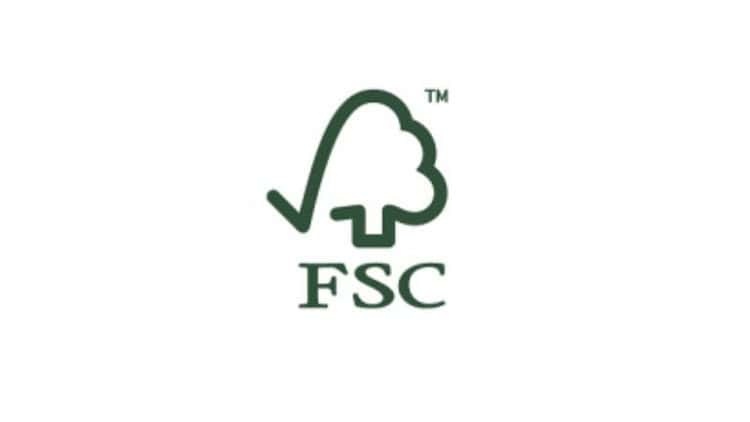
The universal recycling symbol (Mobius loop) on paper products indicates they are recyclable or made from recycled content.
If the paper is not 100% recycled content, the percentage of recycled fiber should be indicated alongside the Mobius loop symbol. Papers made with 100% recycled fiber can use the standalone recycling symbol.
The Forest Stewardship Council (FSC) logo identifies paper products made from well-managed forests that are independently certified.
This ensures responsible sourcing of the wood used to make the paper.
Specific codes are used for different types of paper:
- PAP 20: Corrugated fiberboard (cardboard boxes)
- PAP 21: Non-corrugated fiberboard (cereal boxes, paperboard)
- PAP 22: Paper (newspaper, books, magazines, bags)
- C/PAP 84: Composites (juice boxes, cardboard cans)
Symbol on Aluminium
The symbol may be accompanied by the letters “ALU” to specify aluminum. In some recycling code systems, aluminum is designated with the number 41.
Symbols on Organic
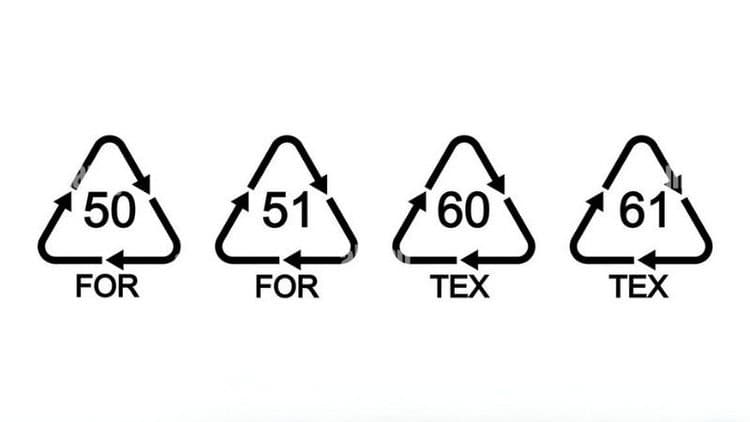
- 50 FOR indicates a product made of wood
- 51 FOR marks cork products
- 60 TEX indicates cotton products
- 61 TEX indicates jute fiber, which is used to make sacks, twine, and rope
These serve as a labeling system to identify specific types of organic materials like wood, cork, cotton, and jute to facilitate proper recycling and reuse of these biomatter products.
Symbol on Battery Recycling
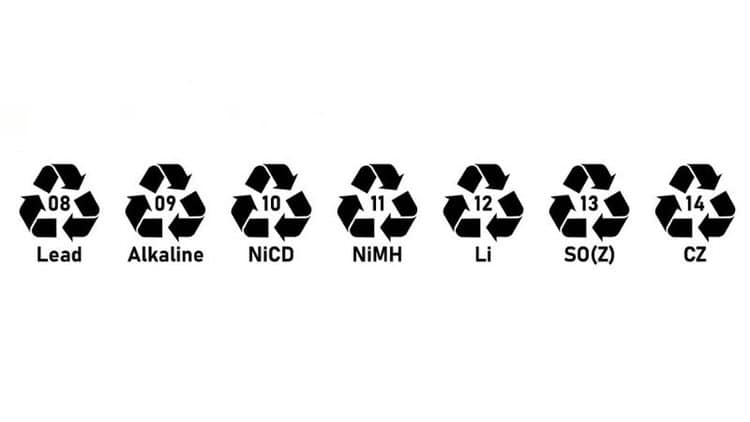
When displayed on a battery or packaging, the numbers 08, 09, and 12 serve as a labeling system to identify the specific type of battery (lead-acid, alkaline, or lithium) to ensure it is recycled through the appropriate processes.
- 08 Lead – Lead-acid battery
- 09 Alkaline – Alkaline battery
- 12 Li – Lithium battery
How Can I Recycle Things at Home?
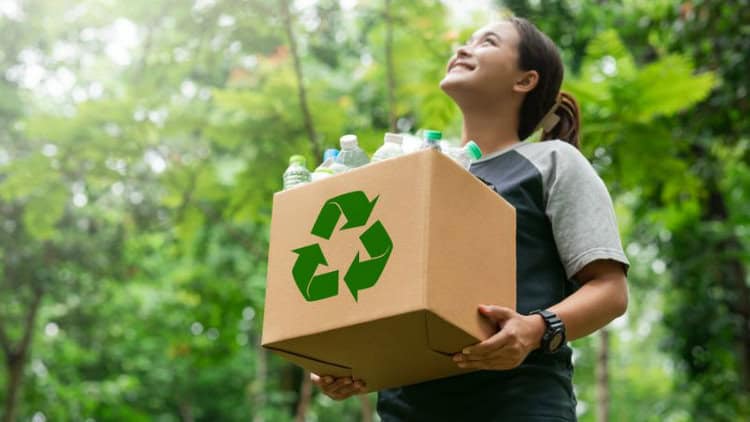
Effective recycling starts with proper sorting. Here’s how you can do it:
- Separate by type: Keep paper, plastic, glass, and metal in separate bins.
- Clean your recyclables: Remove any food residue or liquids as they can contaminate the recycling process.
- Caps and labels: Typically, plastic caps can be recycled, but you should check with your local facility about caps and labels, as practices can vary.
For plastics, empty and flatten containers like milk jugs and detergent bottles whenever possible to save space.
Please note that items like shopping bags and bread bags, often made from #4 LDPE, may need to be taken to special grocery store collection bins instead of the curbside bin.
Be aware of items that need special handling, such as electronics or batteries, which shouldn’t go into regular recycling bins. Also, some plastic products like PVC pipes, floor tiles, and lumber are not generally collected through curbside programs but might have special recycling methods.
Frequently Asked Questions
Are all plastics with recycling symbols actually recyclable?
Not all plastics with recycling symbols are equally recyclable. Recyclability can depend on local recycling capabilities and the demand for recycled material. For instance, PET (#1) and HDPE (#2) are widely recycled, but other plastics may be less commonly accepted.
How can I tell if packaging is recyclable based on the recycling symbol it carries?
You can tell if packaging is recyclable by looking at the recycling symbol. If it has a #1 (PET) or #2 (HDPE), it’s widely accepted by recycling programs. Check with your local recycling facility for other numbers or symbols to determine their recyclability.
What is OPRL?
OPRL is a not-for-profit company based in the UK that operates a packaging recycling labeling scheme. The OPRL scheme aims to support the UK Plastics Pact targets of making 100% of plastic packaging reusable, recyclable, or compostable and recycling 70% of plastic packaging for new packaging.
